Bound by Fate, Kept by Love: Why “Khemjira” is 2025’s Most Haunting Thai Drama
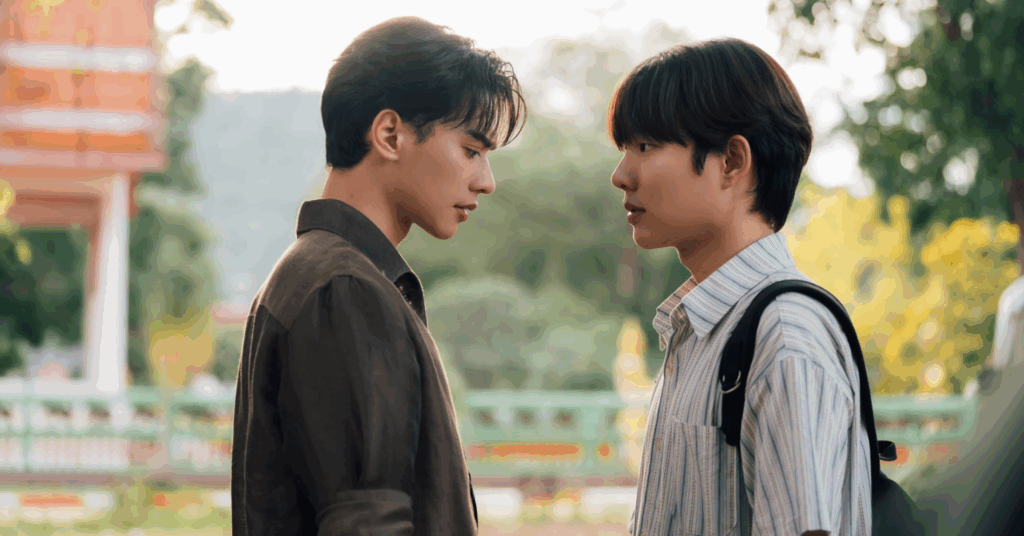
Thai romantic-supernatural series Khemjira closed out with its finale episode two weeks ago and we’re still haunted by the story they’ve left behind. The production has become one of Thailand’s most talked about BL dramas in 2025, consistently racking in records of all time high social media engagement, from 2.5 million mentions after the first episode, to 17.2 million after the finale episode. Produced by Domundi TV under MandeeWork and adapted from author Cali’s novel, Khemjira weaves a riveting story about fated romance, chilling horror, Isaan folklore, and Buddhist mysticism.
Khemjira (Namping Napatsakorn), the drama’s namesake, is haunted by a family curse — all sons in his family are doomed to die a gruesome death before the age of 21. The name carries the meaning “to be forever safe,” a traditionally feminine name that was given to him by his mother to ward off the curse. However, as his birthday approaches, Khem finds himself chased by ghosts and dangers. His best friend Jettana (FirstOne Wannakorn) takes him to Ubon Ratchathani to seek help from his mentor, the village’s shaman, Paran (Keng Harit), who is reluctant to help them. Along the way, Khem and Jet befriend Charnvit (Tle Matimun), a classmate who joins forces with them to battle spirits and free Khem from his curse.
Warning, spoilers ahead as we unpack the series!
Behind the Making of Khemjira
The series has been praised for its high quality production, portrayal of Isaan culture, and an ambitious diversity in genres. Ultimately, the story is about love, specifically “love grounded in spiritual beliefs and northeastern tradition,” as deduced by co-director Den Panuwat. Den, hailing from Bangkok, acknowledged that he was anxious about telling a story so culturally specific as Khemjira, but it was a “productive anxiety.” The lengths that the crew went to accurately depict Isaan culture on the screen included going to Ubon Ratchathani, speaking with locals, and hiring locals as consultants on the customs, rituals, dialect, clothing, and more. Costume designer Nuttapong Khowsa-Ard consulted with experts to design amulets and jewelry with protective yantras and inscriptions. The cast’s wardrobe was also locally sourced from Ubon, with Paran’s shirts mostly made from traditional fabrics like Kab Bua silk. Additionally, in scenes that referenced specific moments in Thai history, such as Phra Nakhon Si Ayutthaya in the mid 18th century, the wardrobe displayed traditional Thai clothing that differed depending on the characters’ social status. Moving towards the future to 1939, Western style clothing reflected a period of political transformation and a push for modernization.
Notably, the set for Paran’s house was built from scratch. The crew researched Isaan house traditions, the types of wood commonly found in Northeast Thailand, and consulted local experts on how decor and structures should be placed, particularly the altars, a visual focal point in many scenes.
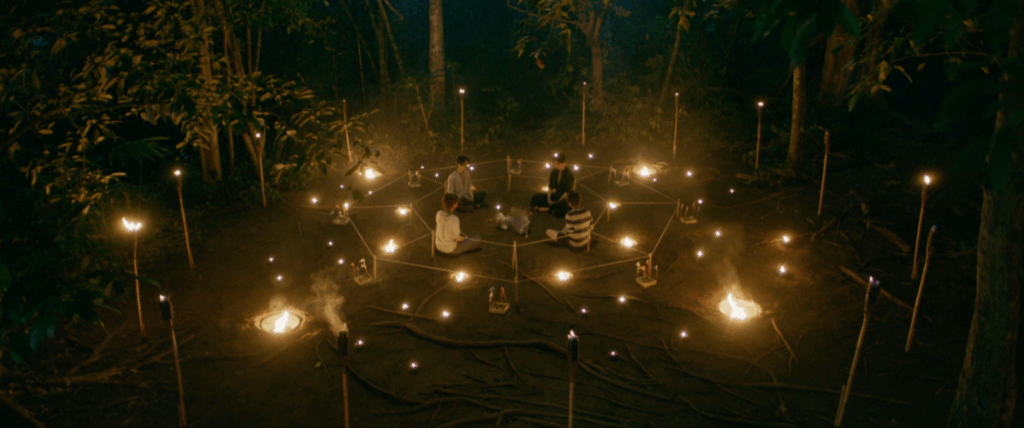

Fans especially looked forward to seeing Paran’s sacred back tattoos, a sprawling depiction of a Naga, representative of Paran’s past life as a Naga deity. The composition of the tattoos were first adapted from descriptions from the novel, and then further developed to include real yantra designs and Isaan script, as well as drawing the Naga from a specific art period, while still maintaining a modern look appealing to viewers. The attention to detail made for a striking scene when Paran’s tattoos were revealed for the first time during a traditional ritual in Episode 3, a cinematic shot of the ink peeking through Paran’s clinging shirt.
พ่อครูคือศักดิ์สิทธิ์แท้ 🙏🏻🙏🏻
— เขมจิราต้องรอด | Khemjira The Series (@KhemjiraSeries) August 23, 2025
Khemjira The Series EP3#เขมจิราต้องรอดEP3 pic.twitter.com/0S2yaqW3gn
Beyond the production design, Khemjira teamed up with local artist group Ubon Agenda in Episode 7 to include an interpretative performance about the Holy Man’s Rebellion, an uprising from 1901 to 1936 by supporters of the Phu Mi Bun religious movement against French Indochina and Siam. In a scene where Khem, Jet, and Charn visit one of the battlefields, Khem remarks, “They don’t really teach this part of history, do they?” Khemjira lended viewers into a piece of Thai history while questioning how to think of ghosts in a broader regard, as more than just scary spirits we see in horror movies, but reminders of the past and challengers of the present. The show further dedicated itself to offering wider context to viewers by explaining specific cultural references in a series of informational graphics called “Paran’s Book” after each episode aired. The crew’s and cast’s thorough research showed not only their dedication to accurately portray history and culture, but also their immense care towards these communities that they brought to life on the screen. It’s clear that these efforts resonated with fans and viewers from all over the world, with many commending the educational value of the show.

A Circle of Love and Loss
With love comes loss and Khemjira depicts the many ways that grief manifests, how we internalize it, cope with it, and heal from it.
Khem’s curse is revealed to originate from a four hundred year old vendetta placed by Rampheung (Green Ausadaporn), a servant from his past life as a young aristocratic daughter. In this past life, set in 1767 Phra Nakhon Si Ayutthaya during the fall of the Ayutthaya kingdom, Khem is Krongkwan (Himawari Tajiri), the daughter to her father’s second wife, while Ramphueng is his young third wife. As a result of his first wife’s grief and jealousy from losing her child in a miscarriage, she murders Rampheung’s firstborn while wrongfully accusing Rampheung of murdering her own child. Under the threat of the first wife, Krongkwan lies and tells her father that she saw Rampheung commit this act, and Rampheung is met with the tragic end of being tortured to death. In her anguish and rage, she curses those who wronged her, including Krongkwan, and vows to keep haunting her in every life.

The series shows strength in developing complex characters through their grief, and alongside Green’s heartwrenching performance as Rampheung, viewers can empathize with her as a villain in understanding her pain. It’s no coincidence that this grief takes hold on the female characters as bereaved mothers and we can see how patriarchal oppression creates and traps victims. Khemjira also touches upon issues of domestic abuse and infidelity in contemporary times, red herring viewers to believe that these grievous incidents were being influenced by otherworldly spirits, to reveal that they were just perpetuated in reality. Grief echoes into modernity, as Krongkwan continues to be victimized by this cycle, meeting yet another tragic end in her next past life as Khemika (Janistar Phomphadungcheep) where she dies of heartbreak, and then into present day as Khemjira, where he has lost his mother at a young age, quietly accepting his fate for an early death with the hope that he’ll reunite with his mother.

On the other hand, Paran, who has also lost his mother at a young age, utilizes his grief as a way of purpose. Paran is a stern and stoic character, tightening restraint on exposing any emotion, which can be reflected in the donning of sunglasses to shield his eyes. It’s through his interactions with Grandma Si (Noknoi Uraiporn), a matriarchal head in the village and a maternal figure to Paran, that we learn that his distant disposition is because he doesn’t want emotion to encroach on his responsibilities. Having been raised by Grandma Si after the loss of his parents, it makes her death even more crushing to have lost someone he can confide in beyond his obligation as a shaman. As his relationship with Khem develops, he faces this dilemma of choosing between duty and love, for choosing love would mean to unravel his pain.
As each character confronts their past lives, we see how grief manifests and cycles, its tangled grip a ceaseless struggle.
The Different Ways Khemjira Shows Us Love
When reflecting on what Namping finds inspiring about his character Khem, he says, “Even in his darkest moments, love somehow brings him hope… As long as there’s love and hope, maybe you can still keep going. That’s what I find so beautiful about him.” Namping brings a balanced performance in portraying Khem’s character as exhausted and scared without being weak. And truly, that’s what makes Khem’s character so commendable, because for someone who’s been haunted by ghosts all his life, he still finds the strength to be resilient, kind, and optimistic.
The love portrayed in Khemjira goes beyond the expected romance between our two main leads. Khem, Jet, and Charn’s friendship is a hallmark of how deep and meaningful platonic love can be. In Episode 10, when Khem leaves Ubon after a string of devastating events, fearful that his curse will continue to harm those around him, Jet and Charn chase after him to the train station. Distraught, Khem tells Jet that because of him, Jet has lost those that he loves, to which Jet replies, “Don’t you think I love you too?” Jet and Charn do their utmost to look after Khem as the clock ticks down to his birthday, Rampheung’s vengeful powers growing stronger as she seeks out Khem. In these bleak moments, where it seems like Khem has almost given up hope, it’s heartwarming to see Jet and Charn relentlessly fight for his safety and happiness, and for Khem to draw strength from their dedication.

Love in Khemjira also exists within community and family beyond convention. The villagers of Ubon ground the story and build a tight knit community, working together when crisis arises. In Episode 10, in the wake of Grandma Si’s death, the villagers send off Paran when he goes to Bangkok to help Khem, wishing him safety and luck. “It’s not just you who cares for us. Everyone in the village cares for you too,” they reassure him, showing that even without Grandma Si, they can still support him. In the finale episode, when Paran has lost his powers after a climatic face off with Rampheung, the villagers take it upon themselves to split up his duties while he trains and replenishes his power. These touching moments add to his journey of learning how to balance his duty for his own desire and emotions, teaching him that he can also reach out and rely on those around him.
And most of all, Khemjira shows us how love persists, transcending beyond lifetimes. The lives of the characters in Khemjira are intertwined, their reincarnations tracing the actions and events of their past lives, particularly our main cast: Khem, Paran, Jet, and Charn, who in their past lives lived as: Khemika, Pawat, Jintana, and Chayada. In this particular life, set in 1939 Phra Nakhon during a nationalist movement, Khemika and Pawat were unable to have their happy ending with Khemika tragically dying of a heart attack while waiting for her fiancé Pawat’s return from war. Jintana (Natty Natthamon) and Chayada (Nycha Nichapat), having lost their best friend Khemika, also faced disapproval from their parents of being in a lesbian relationship, and found themselves separated by Jintana’s arranged marriage and Chayada’s studies abroad. In their present lives, it feels as if their fates are preordained, and in moments of peril, despairing.
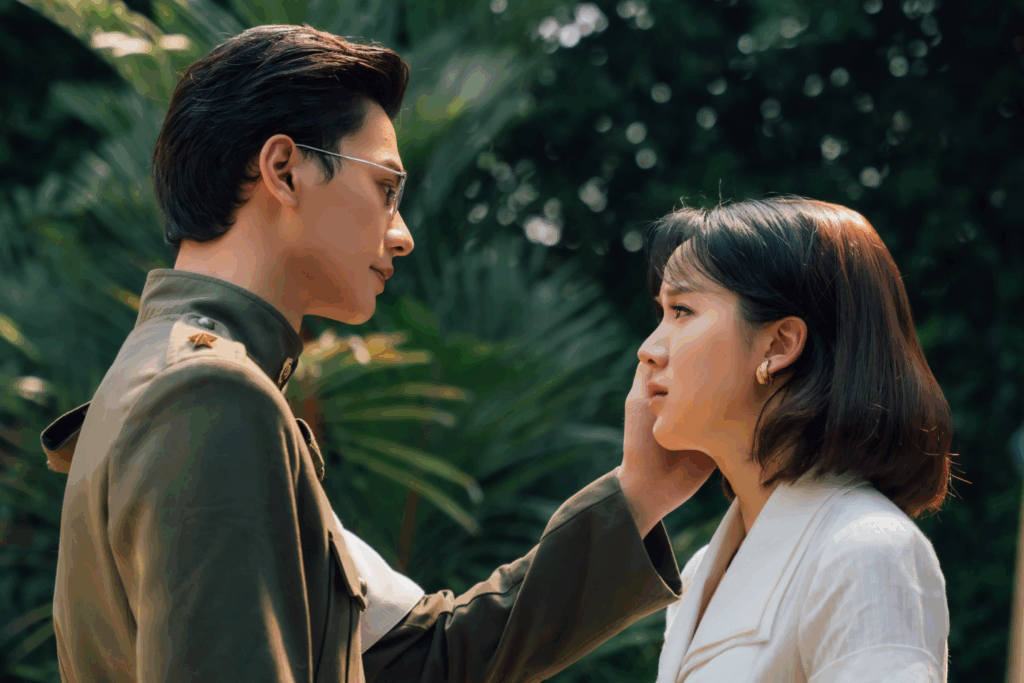
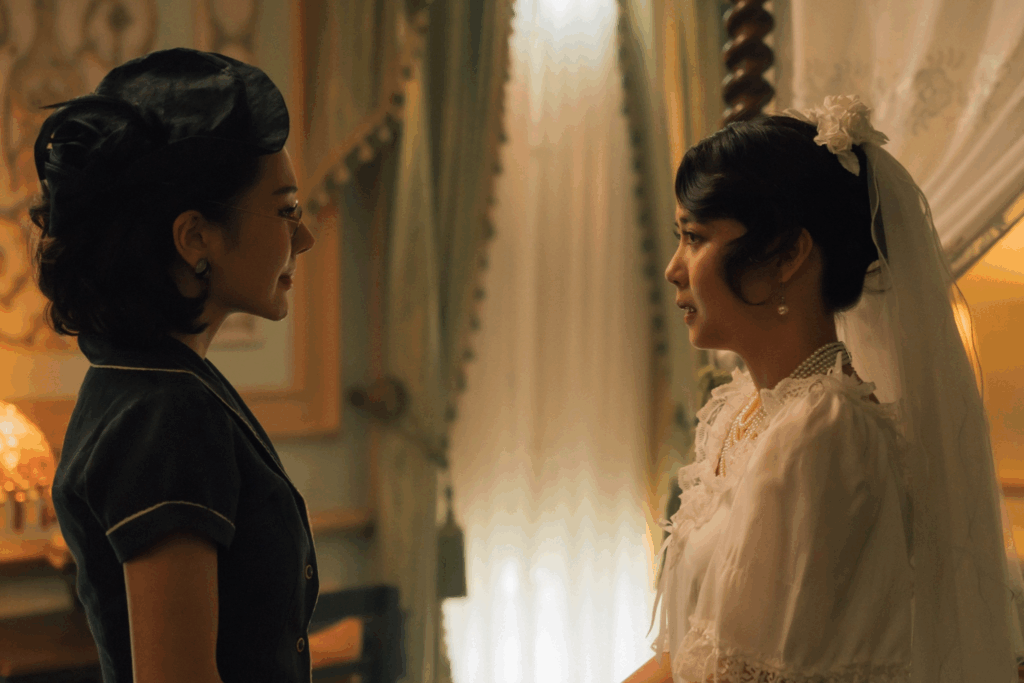
When Paran confesses his feelings to Khem in Episode 8, a turning point in the series, he divulges that his cold nature stems from the fact that his mother died from malignant karmic energy, a consequence of his late shaman grandfather’s black magic. “I can’t bear to lose anyone I love ever again. And now I realize, I just need this moment, just for a while, to listen to my heart, and tell you how I feel.” It’s a vulnerable admission from someone who was steeled to hide his emotions most of his life. Keng’s attuned delivery in this intimate moment captures Paran’s sincerity, an onscreen victory for viewers after all the longing glances, quiet pauses, and hesitant touches.
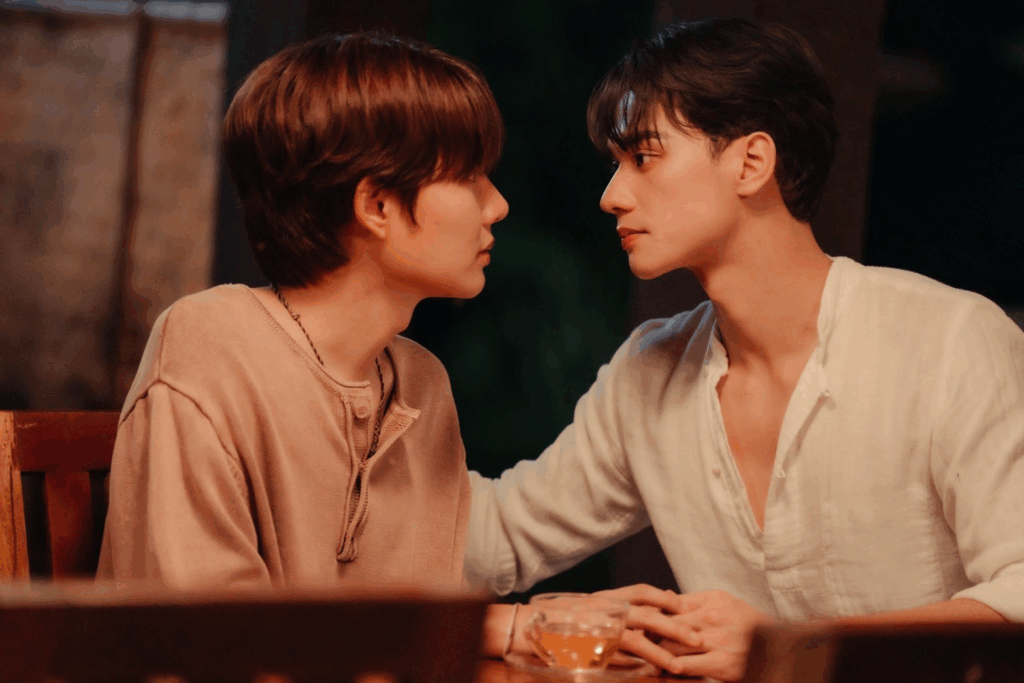
In the finale episode after breaking the curse, Paran tenderly wishes Khem a happy birthday and says, “Remember Khem, I choose you.” It’s a reminder that although they were guided by their past lives, in their present ones, they’re different people. It’s more than just love that has gotten them to where they are — it’s an affirmation of their feelings, of their endurance, of their strength. Khemjira in its last minute, leaves us with these words, “Bound by fate, kept by love, strengthened by never giving up.” Having been on this tumultuous journey with these characters, we can truly see the tenacity to which love persists.

Khemjira’s heartfelt stories and cultural impact has reached wide audiences, both domestically in Thailand and internationally. Thai BL has become increasingly popular within mainstream global media and we’ve seen the genre evolve from coming-of-age university setting storylines to darker, mature, supernatural themes. Khemjira continues this evolution while making new strides for cultural representation within the Thai BL genre, the show’s massive success in spotlighting Northeastern tradition and Isaan culture has brought Thai soft power to international audiences.
Khemjira as a main series may be over, but there’s more to come! Khemjira Special Episode is set to air in 2026 and a cast concert has also been announced to take place next year, a remarkable result of the cast’s musical performance in the series, all four lead actors having contributed original soundtrack singles.
All 12 episodes of Khemjira are available for streaming on iQiyi.
Want more spooky watches? Check out our latest horror comedy recs from EnVi here!



